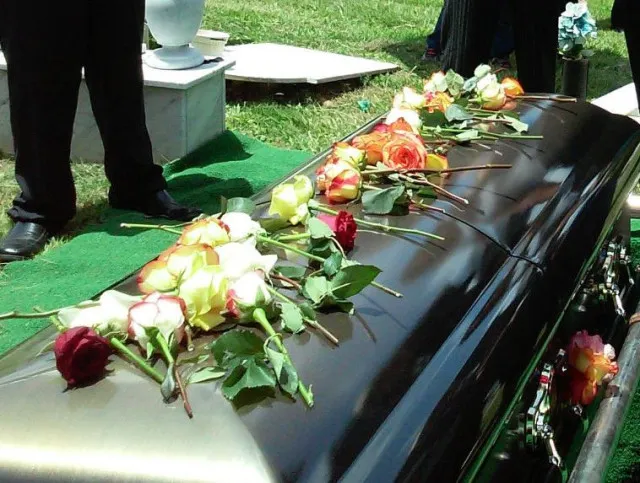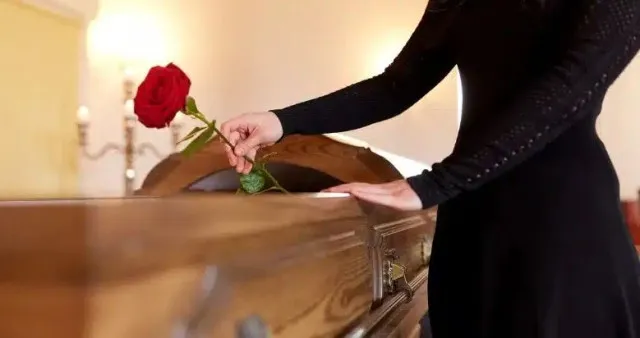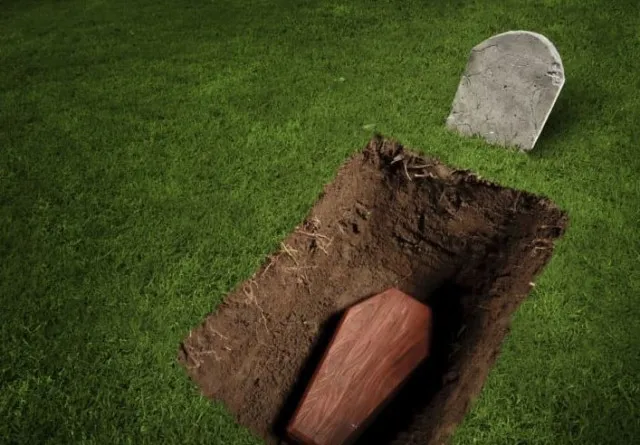Why do we bury people in coffins rather than just in the ground? The answer isn’t as straightforward as you might think. From historical rituals to health concerns, cultural norms, and evolving alternatives, the practice of using coffins has deep roots in human history. Let’s explore why coffins became the default choice for burial and why they continue to be a preferred method today.
Historical Significance of Coffin Burials

Coffin burials date back thousands of years, with some of the earliest examples found in Ancient Egypt and China. These cultures viewed coffins as more than just a practical means of burial; they represented respect for the dead and protection in the afterlife. Throughout history, coffins were often made from materials that symbolized the deceased’s social status, such as precious woods or metals.
The use of coffins was not merely symbolic. In medieval Europe, coffins were adopted by the wealthy as a means of displaying their status, while also protecting the body from external elements. Even today, traditional coffin burials serve as a nod to these longstanding customs, highlighting the deep cultural attachment to this practice.
Practical Reasons: Transport and Safety
When a person dies, their body needs to be transported safely from one place to another—whether from a hospital to a funeral home or from a funeral home to the burial site. Coffins make this process more practical. Their solid construction allows for easier handling and safer transport, particularly over long distances.
Coffins also provide a level of dignity. While body bags are commonly used for transporting remains, they lack the ceremonial touch that a coffin offers. Coffins not only conceal the body but also mitigate unpleasant odors associated with decomposition, making the experience more bearable for mourners.
In the past, this sense of dignity was not just about respect but also safety. The solid, sealed nature of coffins helps contain any biological hazards that may arise from a decomposing body, protecting both the living and the surrounding environment.
Health and Environmental Concerns: Decomposition and Disease
While the dead can no longer harm the living, their bodies can still pose health risks. After death, the human body becomes a hub for bacteria, some of which can transmit diseases like tuberculosis and cholera. Though rare, these pathogens can be dangerous, especially in areas with inadequate healthcare or sanitation systems.
To prevent the spread of disease, high-risk bodies may be placed in sealed coffins, often lined with lead or zinc. This tradition dates back centuries and continues in some regions today. For example, in the UK, lead-lined coffins are required for burials above ground, as they help seal the body and prevent contamination.
Moreover, the natural decomposition process can attract scavengers and insects, which could disturb the burial site. Coffins act as a physical barrier, keeping the body intact and undisturbed for longer periods. This barrier not only prevents disease transmission but also maintains the sanctity of the burial ground.
Cultural Beliefs and Symbolism: The Significance of Funeral Practices

Coffins have a symbolic value that goes beyond their physical function. Across cultures, funeral practices reflect the beliefs, values, and traditions of societies. In many cultures, the coffin represents a final resting place, offering protection and shelter for the soul’s journey into the afterlife.
Historically, burials were often conducted with personal belongings placed inside the coffin, symbolizing a continuation of life beyond death. For instance, ancient Egyptians buried their dead with everyday items, believing they would be useful in the afterlife. Coffins thus became a means of preserving the deceased’s identity, memory, and connection to the living world.
Even in modern times, people still view coffin burials as a sign of respect and closure. The coffin serves as a physical embodiment of the farewell, making it a significant part of the grieving process.
Protecting Graves from Disturbance: Preventing Scavengers and Grave Robbers
Without a coffin, buried bodies are more susceptible to disturbance. Animals like coyotes, raccoons, and even domestic dogs can dig up shallow graves, exposing remains. Insects, like flies, can burrow up to six feet deep, potentially reaching a body buried without a coffin. This not only poses a sanitation risk but also disturbs the integrity of the burial site.

Historically, coffins were also a defense against grave robbers. In the 19th century, grave robbing became a significant issue, particularly in Western countries, where bodies were stolen for medical research or valuables. To combat this problem, more secure coffins were developed, some even equipped with alarms or defensive mechanisms like the “coffin torpedo,” which detonated if tampered with.
Though grave robbing is less of a concern today, the coffin’s protective role against natural disturbances remains relevant.
Modern Alternatives: Exploring New Burial Methods
While traditional coffin burials continue to be a popular choice, modern society has started exploring eco-friendly alternatives. As the environmental impact of coffins and burial plots becomes clearer, people are seeking sustainable options. For example:
- Cremation: A long-standing alternative, cremation has gained popularity due to its lower cost and space-saving benefits.
- Natural Burials: In natural burials, bodies are placed directly in the ground, allowing for natural decomposition without chemical embalming or a traditional coffin. Biodegradable caskets or shrouds are often used.
- Aquamation: Also known as water cremation, this process uses water and heat to break down the body, leaving behind fewer pollutants.
- Human Composting: The body is transformed into nutrient-rich soil, offering an environmentally friendly way to return to the earth.

These emerging methods offer people a way to choose a burial that aligns with their values, whether it’s reducing their carbon footprint or contributing to the natural ecosystem.
Conclusion: The Evolving Practice of Coffin Burials
While coffin burials have long been the standard due to historical, cultural, and practical reasons, modern society is beginning to reconsider the tradition. The coffin’s role in ensuring dignity, health safety, and environmental protection has defined it as the go-to option for centuries. Yet, as attitudes toward death evolve and environmental concerns rise, alternative methods are becoming more popular.
Ultimately, the choice of burial is deeply personal, shaped by tradition, beliefs, and values. Whether one opts for a traditional coffin, cremation, or natural burial, the essence of the practice remains the same: honoring the deceased and providing peace for the living.


